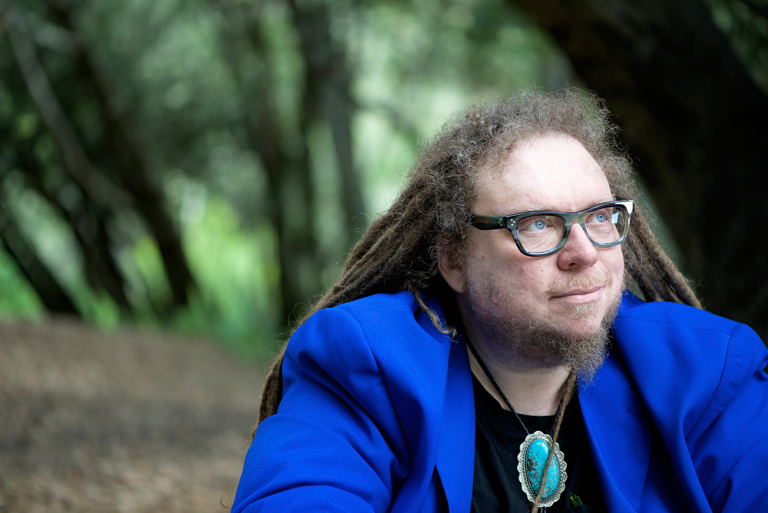By Alexander Cuntz, Economics and Statistics Division, WIPO
New research by WIPO shows that a wide range of factors, and not income alone, motivates creators to engage in creative activity and explores what this means for copyright policy and public funding of the arts.

Legal scholars worry about the increasing disconnect between the formal exercise of rights conferred by copyright law and the underlying economic purpose of copyright law, which is to provide the incentives to create and distribute works. Much of the conversation surrounding the effects of copyright policy focuses on monetary incentives and how well such incentives guide the allocation of resources around creative expressions and works. However, these debates fail to recognize that artists’ motivations are wide-ranging and often driven by non-monetary considerations. In this context, copyright law as it is may not achieve its full potential as a mechanism to generate incentives for creativity. Why? Because the motivators that drive creators are not reflected adequately in current copyright law and practice. In fact, a mismatch may exist among the factors that motivate creators, how they behave, and the incentives certain elements of copyright law provide.
Motivating factors for creative activity
WIPO’s research points in this direction. The study – Unpacking predictors of income and income satisfaction for artists – builds on unique survey data for current artists working in the United States. It shows that motivations other than income predict a non-trivial fraction of artists’ income satisfaction, and, arguably, generate substantial creative activity.
More specifically, the WIPO study provides empirical evidence that reputational rewards and returns from altruistic behavior are important sources of artists’ satisfaction. For example, prizes and grants generate appreciation and recognition for artistic work that exceed satisfaction derived from transferring money and annuities (income/prize money alone). However, there are notable trade-offs. For instance, while altruistic behavior such as personal time spent practicing and performing arts in public makes artists more satisfied, such a “give-away culture” also decreases their income from commercial activities. Moreover, the evidence on “procedural utility” as another source of motivation – in other words, the satisfaction that artists derive from working in the arts and “immersing” themselves in creative processes – is less clear-cut than one would have expected from previous economic research.
These findings indicate that artists have different concepts and criteria when it comes to job satisfaction and may derive value from their work in a variety of ways aside from income. This is in line with findings from previous research, which shows that artists are much more satisfied with their jobs than other workers with similar professional and occupational standing. The WIPO study, however, attempts to identify the specific sources of motivation for artists that copyright law may also want to address and cultivate. One caveat to this research, however, is that we do not know whether the current legal system encourages or lowers artists’ satisfaction and their levels of creativity. This might be an area for future research.

Implications for copyright policy
What do these findings mean for copyright policy and public funding of the arts?
When determining intervention goals and assessing their impact, policy makers may want to consider all relevant sources of motivation that nurture creativity so that society benefits from its full potential. At minimum, policies may want to account for the side effects that a single policy focus on monetary incentives entails.
A mismatch may exist among the factors that motivate creators, how they behave, and the incentives certain elements of copyright laws provide.
Many debates on reforming copyright frameworks in the digital age, however, put strong emphasis on balancing rights with monetary incentives. This is the case, for example, with the new European Copyright Directive, which attempts, among other things, to improve the bargaining position and remuneration of authors.
In concrete terms, then, which elements of copyright law deserve more attention and why?
First, legal mechanisms affect the way works can be attributed to artists. Attribution ensures they are recognized for their work, which in turn helps them build artists reputation and gain recognition from their peers. Such peer recognition is a source of satisfaction. For example, certain jurisdictions grant “unwaivable” moral rights, which link an author to their work. These rights are perpetual and non-transferable. In these jurisdictions, over time, the contribution authors make is likely to remain more visible to peers, for instance when referenced as the source of follow-on creativity. Attribution and the value of moral rights to creators have been given too little attention in previous research. However, the research that has been undertaken in this area, does call into question whether moral rights should differ across national copyright systems, which is currently the case.
Second, income-focused reforms may effectively miss policy goals. Previous research shows that artists often hold multiple jobs to cross-subsidize lower paying art jobs and that their preferences for practicing art (once their basic needs are covered) can render public funding in the arts ineffective. This was evident when public subsidies for Dutch visual artists were introduced in the late 1990s. While the subsidies brought about a reduction in the time artists devoted to higher-paying non-art-related jobs and led to some artists devoting more hours to existing art jobs as well as some new artists entering the profession, the effect of the policy was to lower wages in the arts due to stronger competition among artists. While its goal was to alleviate the financial distress experienced by artists, in practice, the policy failed to do so.
What we need now is more discussion on the mechanisms enshrined in copyright law; a discussion that goes beyond income and income effects on creativity.
Third, the wave of new content from amateurs and creative users in the digital age, and new forms of digital cultural participation are linked intimately to sources of “intrinsic” motivation. Next to lower (digital) production costs, altruistic behavior and rewards from “immersing” in creative processes can help explain why we see a massive amount of user-generated content (UGC) on platforms, even if only a small fraction of it has significant commercial value and generates income. Also, not all users of digital platforms will become amateur creators. Individuals seem to specialize either in using or in generating online content. Policy choices in this area are particularly hard to define because they need to balance the concerns and interests of new amateur creators, original creators and right holders, as well as society’s taste for variety – in particular with respect to “transformative” uses of works. But, again, good governance will have to do more than simply take pecuniary incentives into account.
Finally, behavioral bias and its implications for legal frameworks can also have a bearing on policy. The procedural utility and satisfaction artists derive from practicing art may have a downside –it may cause “creativity bias”. Put differently, artists may overestimate the value of their own works. This explains why some works are not traded in art markets. In the presence of such bias, the importance of right holders (other than creators) as intermediaries has been stressed, as has a proposal for the legal framework to take greater consideration of work-for-hire rules. In some jurisdictions, these rules establish the employer – rather than the employee who creates the work as part of their job – as the legal author. Work-for-hire rules may help to overcome creativity bias in areas where works are unsold or where markets fail because of these biases.
There may also be untapped sources of motivation in the legal frameworks that have been established to encourage creativity. What we need now is more discussion on the mechanisms enshrined in copyright law; a discussion that goes beyond income and income effects on creativity. While this discussion is not entirely new among legal scholars, all of the relevant legal aspects that may have a role to play have yet to be fully identified. Additional economic research is needed to acquire a better understanding of the connections among specific design aspects of copyright law, their effect on artists’ motivation at different career stages, and, ultimately, the creative activity these can generate.
Any future research, however, must take into account artists’ perspectives on why they are creative. The singer, Nick Cave, says he is creative “because I have to be”; actor Willem Dafoe notes, “I like how I feel, how I think, when I am making things” and visual artist Yoko Ono notes that she is creative “because I am what I am”. Obviously, something more than income makes these artists create.
*For more information see Creators’ income situation in the digital age and Unpacking predictors of income and income satisfaction for artists. Views expressed here are those of the author, and do not necessarily reflect the views of WIPO or its member states.


